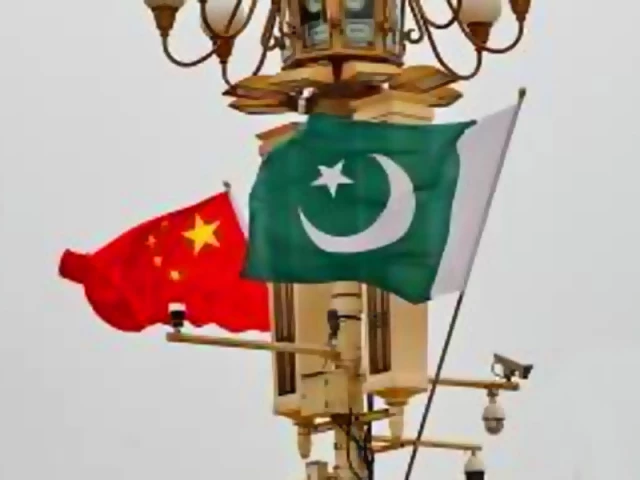Islamabad:
Pakistan has decided to release over RS100 billion to Chinese power plants in front of Prime Minister Shehbaz Sharif’s visit and cut outstanding quota with almost a quarter in an attempt to tackle one of Peking’s most important concerns.
According to officials, the Ministry of Finance has instructed the payments to be made by the subsidies of the electricity sector assigned to the budget of the current financial year. RS100 billion is expected to be paid out among Chinese power producers within the next few days.
In addition to RS100 billion, a number of RS8 billion is also given from the regular budget distributions for the Chinese power manufacturers.
The development came the days before the departure of Prime Minister Shehbaz Sharif, who travels to China this weekend to attend the head of the Shanghai Cooperation Organization (SCO) state meeting.
The premiere is also expected to attend an investment conference organized by Pakistan’s embassy. The sources said the prime minister had given instructions to the Ministry of Finance to clear RS100 billion payments to Chinese independent power producers (IPPS) by August 25.
From June this year, the outstanding quota for the China-Pakistan Economic Corridor (CPEC) constituted power projects RS423 billion. After the injection, Chinese charges would reduce by a quarter to slightly above RS300 billion.
There was a slow increase in the Chinese outstanding quota in the last financial year, but the charges still stood up.
Since 2017, the country has already paid RS5.1 trillion in energy costs to the 18 Chinese power plants equal to 92.3% of the invoiced amount, including interest. Pakistani authorities believe that the actual remaining energy costs were less than RS300 billion and the rest of the amount was due to additional fees.
The government is in the process of taking almost RS1.3 trillion in fresh loans from the local business banks to withdraw the circular debt that it owes the state -owned power plants, nuclear power plants, privately owned facilities and the Chinese facilities. However, the agreement has not yet been formally completed.
RS423 billion unpaid debt is in violation of the 2015 CPEC Energy Framework Agreement, which binds the government to fully clear the quota regardless of whether the authorities can recover the amounts from final consumers.
Together with security, the non-fulfillment of CPEC contracts is one of the reasons for slow progress in economic and commercial relations between the two nations. According to the CPEC Energy Framework agreement, Pakistan was obliged to create a rotating fund with 21% of power invoice to protect Chinese companies from circular debt crisis.
However, the former government opened a Pakistan Energy Revolving account in the State Bank of Pakistan (SBP) in October 2022 with RS48 billion in annual awards. But it is limited withdrawal to RS4 billion per year. Month, which led to the current debt portfolio of RS423 billion.
Out of RS48 billion awards for this financial year, the government has dealt with RS8 billion payments for the July-August period, the sources say.
RS100 billion would be distributed among the Chinese according to their invoicing, according to the Ministry of Energy Servants. They said the majority of the part would go to the three largest coal -fired power plants.
Pakistan owed RS87 billion to the imported coal -fired Sahiwal power plant, while the company received RS1.14 trillion in the last eight years of its operations. The country also owed RS69 billion to the coal-fired HUB power project compared to the total claim of RS834 billion.
The remaining outstanding quota of the coal-fired Port Qasim power plant were RS85.5 billion against the total bills of over RS1 trillion. THAR COAL PROJECT fees remained on RS55.5 billion. It had claimed RS566 billion of fees.
The government’s circular debt for the energy sector reduced over RS800 billion in June this year thanks to budget injections instead of any real improvement in the sector’s results.
The reported reduction in circular debt (CD) for FY 2024-25 is primarily attributed to a disposable stock of RS801 billion rather than any sustained operational efficiency gains, according to a report from the Federation of Pakistan Chamber of Commerce and Industry (FPCCI) last week.
It added that this solution was funded through fiscal measures, not through performance improvements in the electricity sector.
The FPCCI report stated that RS801 billion was originally earmarked as a targeted direct subsidy to consumers. However, it was instead used to reduce the circular debt portfolio, which can distort the public view by exaggerating the success of reforms and under -representing the advantage that consumers should have received directly, according to FPCCI.
While the heading suggests a net reduction in circular debt, the inclusion of an off -adjustment – before the previous year’s adjustments and others in total RS358 billion – the actual path creates, the report reports. Excluded RS801 billion



